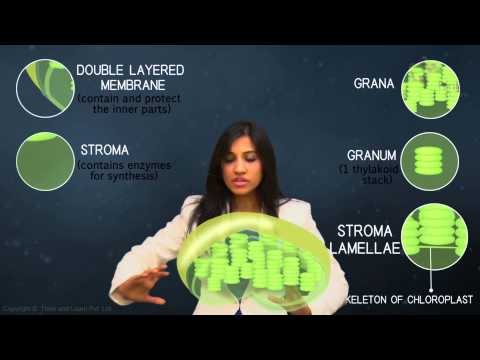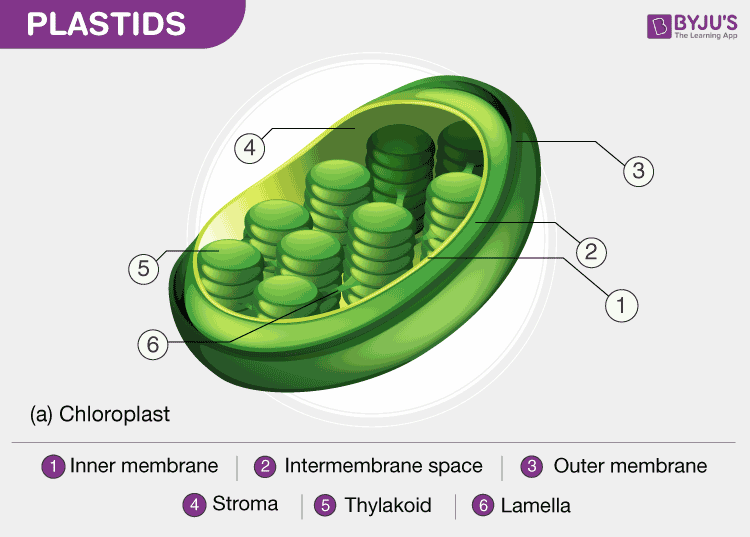
What are Plastids?
Plastids are double-membrane organelles which are found in the cells of plants and algae. Plastids are responsible for manufacturing and storing of food. These often contain pigments that are used in photosynthesis and different types of pigments that can change the colour of the cell.
Explore More: Photosynthesis

Types of Plastids
There are different types of plastids with their specialized functions. Among them, a few are mainly classified based on the presence or absence of the Biological pigments and their stages of development.
- Chloroplasts
- Chromoplasts
- Gerontoplasts
- Leucoplasts

Chloroplasts
Chloroplasts are biconvex shaped, semi-porous, double membraned, cell organelle found within the mesophyll of the plant cell. They are the sites for synthesizing food by the process of photosynthesis.
Main Article: Chloroplasts
Chromoplasts
Chromoplasts is the name given to an area for all the pigments to be kept and synthesized in the plant. These can be usually found in flowering plants, ageing leaves and fruits. Chloroplasts convert into chromoplasts. Chromoplasts have carotenoid pigments that allow different colours that you see in leaves and fruits. The main reason for its different colour is for attracting pollinators.
Gerontoplasts
These are basically chloroplasts that go with the ageing process. Geronoplasts refer to the chloroplasts of the leaves that help to convert into different other organelles when the leaf is no longer using photosynthesis usually in an autumn month.
Leucoplasts
These are the non-pigmented organelles which are colourless. Leucoplasts are usually found in most of the non-photosynthetic parts of the plant like roots. They act as a storage sheds for starches, lipids, and proteins depending on the need of the plants. They are mostly used for converting amino acids and fatty acids.
Leucoplasts are of three types:
- Amyloplasts – Amyloplasts are greatest among all three and they store and synthesize starch.
- Proteinoplasts – Proteinoplasts help in storing the proteins that a plant needs and can be typically found in seeds.
- Elaioplasts -Elaioplast helps in storing fats and oils that are needed by the plant.
Inheritance of Plastids
There are many plants which are inherited from the plastids from just a single parent. Angiosperms inherit plastids from the female gamete while there are many gymnosperms that inherit plastids from the male pollen. Algae inherit plastids from one parent only. The inheritance of the plastids-DNA seems to be 100% uniparental. In hybridisation, the inheritance of plastid seems to be more erratic.
Also Refer: Difference between mitochondria and plastids
Register with BYJU’S to learn more in detail about Plant Cell, Plastids, Types, Structure and its functions.

I liked it very much
THANK YOU!!! It was very useful!
Well nicely explained
Good thing
thank for the information
Very much helpful😃👌👌👌🤘🤘
Very very helpful
Thanks for your best explanation regarding plastids!!
Very nice mam
Thank you mam
Its really very good
Very helpful 👍👍👍👍👍
thankyou mam these explanation is very helpful.
Very educative
Very useful!
Superb explanation very useful 👍